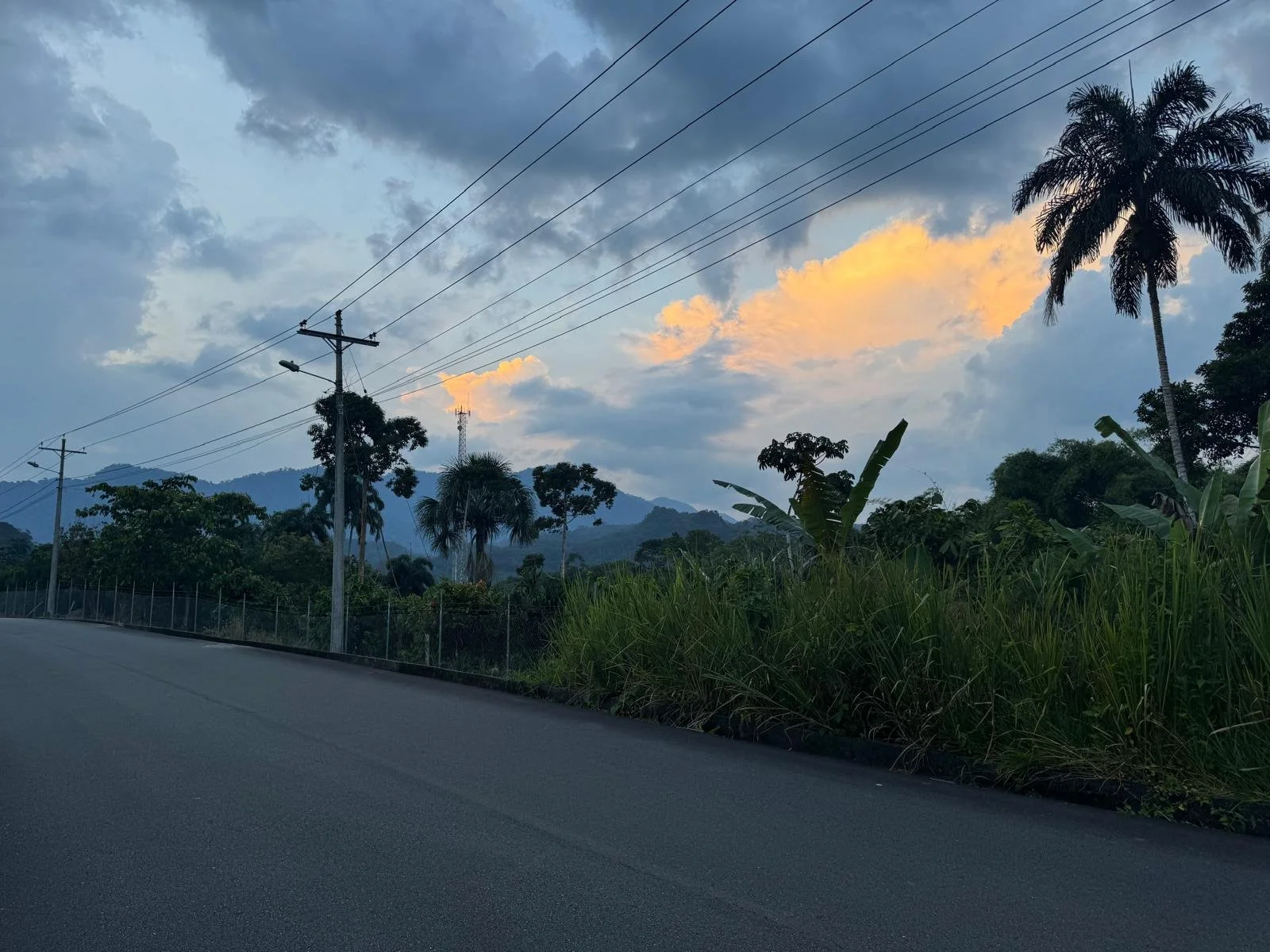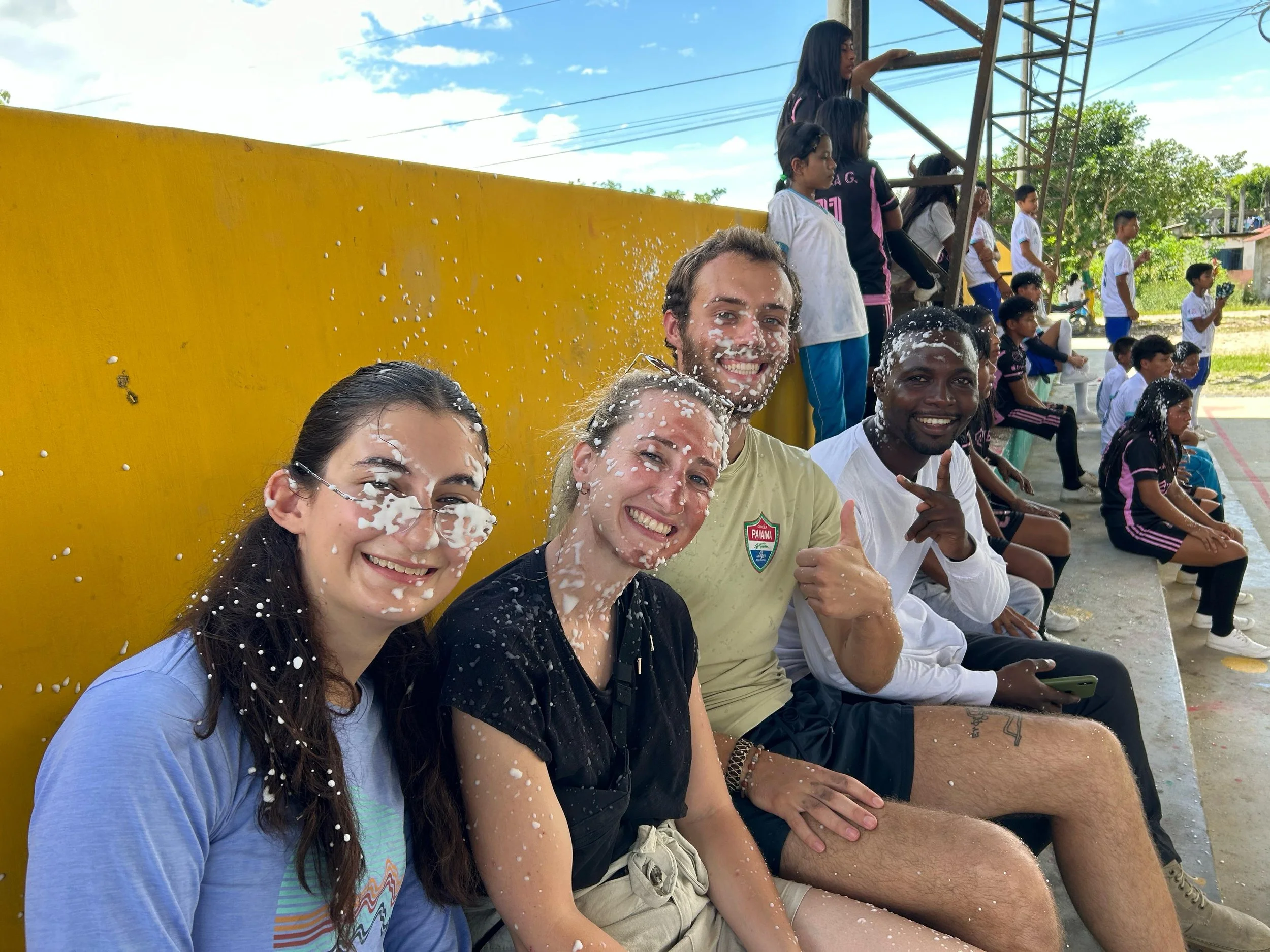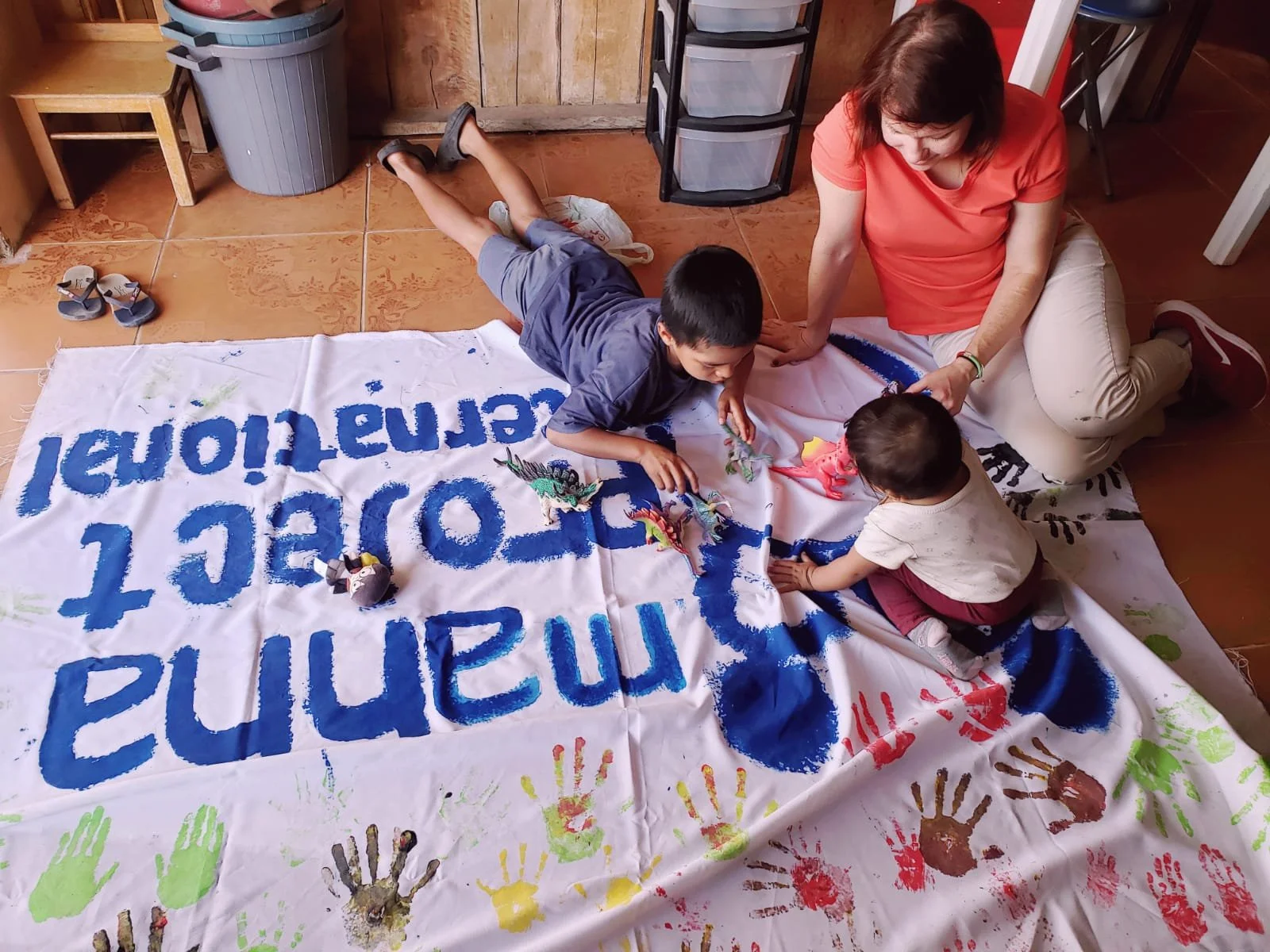If you thought that as 5 volunteers living and working together, we’d want to spend our 3-day vacation apart from each other, you thought wrong! A couple weeks ago, this group of friends and coworkers (in that order) decided to venture to the beautiful city of Cuenca for a “family vacation” to celebrate Cuenca’s independence. We packed our bags, boarded a plane (after stuffing 5 people into a cab to the airport like a clown car), and landed in the “Europe of Ecuador” ready for a new adventure. Not only were we in Cuenca to celebrate Cuenca’s Independence, but also Halloween and Ecuador’s Day of the Dead (el Día de los Difuntos). In honor of our Cuenca escapades, I’ve made a list of the Top 10 Things We Learned in Cuenca. Read on, learn something… and laugh a bit, too!
10. Always ask for directions more than once.
We decided as a group to take a day and head to Ingapirca, the Incan ruins. We arrived at the bus stop where, after asking directions for 10 minutes, we finally found a bus headed in some direction. After an hour on the first bus, we were instructed to get off. From there we were told to take another bus, but it was very unclear which one to take. We waited. We asked again. We waited. We bought chips and soda. We then got on a bus we thought might be headed in the right direction and finally, after another hour on the bus, we thankfully began seeing signs for Ingapirca.
9. Donning wigs and dancing like crazy people is fun whether you’re the only ones doing it or not.
For Halloween, we brought our wigs from our Scooby Doo Gang costumes (very red, very blonde, very bright) from Sangolqui to Cuenca. I think we wore the wigs more than we didn’t- and didn’t regret it for a second!
8. McDonald's is wayyyyyyyy better in Ecuador.
No explanation needed.
7. Buying concert tickets at a lentils restaurant is not strange.
In fact, it’s completely normal. After wandering for an hour trying to find the Estadio Doña Menestra (Mrs. Lentils stadium) to buy the tickets for the Chino y Nacho concert we wanted to go to, we stumbled upon the Doña Menestra’s restaurant next to the stadium. Only half joking, we walked into the restaurant to ask about the tickets… and bought them right there at the counter where other people were ordering their lentils. Not weird at all.
6. ATMs are mean.
Plain and simple. After Ayzsa realized her card was not broken, but rather all of the 6 ATMs she had tried were, we all tried the same ones. We were down to our last 5 dollars collectively when we finally saw the golden arches of banks- the Bank of Pichincha. Life improved dramatically afterward.
5. Not all who wander are lost.
We spent one entire day just wandering the streets of Cuenca. Because of the festivals, there were street vendors selling all kinds of foods, drinks and artisanry. There is also a river running through practically the entire city that made for a beautiful walk. While wandering, we saw a sign pointing to Incan ruins in the city. We decided to follow it and ended up at a HUGE and incredible ruin site (which looked nothing like the photo and we later realized was in fact, not the place we were looking for). This was easily one of the coolest things we saw/did while we were there and we actually stumbled upon it. We spent over two hours wandering the ruins and gardens which lay below.
4. It’s okay to eat at the same restaurant more than once.
We found a joint called Chiplote. Yes, you read that right. Not only did Chiplote have the best atmosphere (Reggaeton music from speakers and The Theory of Everything muted playing on the TV screens simultaneously), but the food is to die for. A burrito with French fries inside? Totally worth the second visit.
3. Concerts are fun.
If you don’t know the words, Ecuadorians might yell at you. Fake it ‘til you make it.
2. If you haven’t showered in a shower with lights, a radio, and jets which literally come from every direction, you haven’t lived.
This is not a drill. We are still trying to figure out how to bring this magical showering experience from our Cuenca hotel to the Manna Ecuador House.
1. Traveling is truly a blast.
Traveling with friends makes for some of the best memories of your life. Do it often, and make it count!
See yourself traveling around Ecuador? Apply now!



















